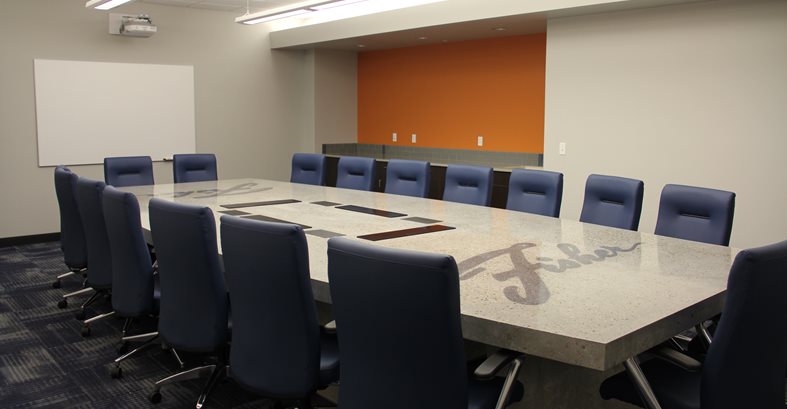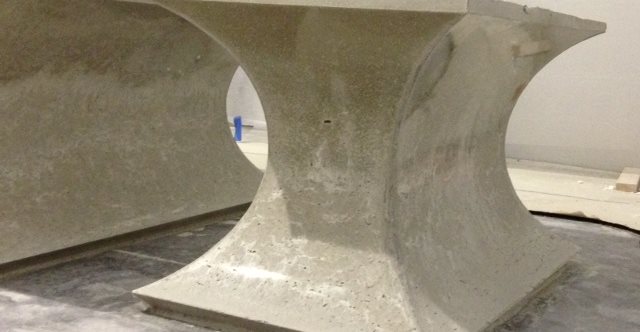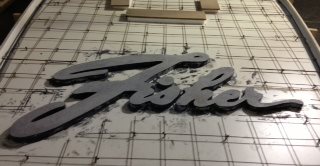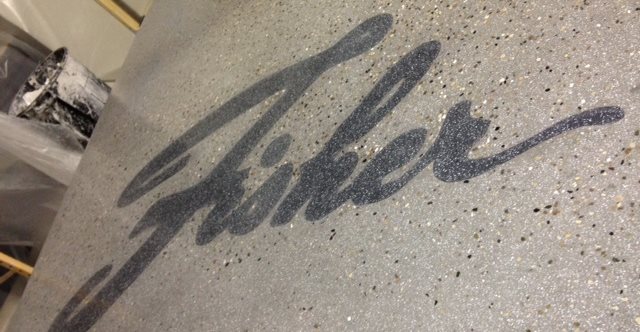- Concrete Furniture Home
- Concrete Furniture Photos
- Concrete Furniture Types
- Concrete Coffee Tables
- Outdoor Concrete Furniture
- Concrete Office Furniture
- Concrete Storage Furniture
- Concrete Ping Pong Tables
- Design Ideas
- Concrete Furniture Design Ideas: Behind-the-scenes info and photos
- Free Concrete Furniture Catalog
- Related Information
- Learn How to Make Bent Concrete Furniture
- Concrete Contractors: Find GFRC Mixes for Precast Concrete
Concrete Conference Table Goes High-Tech
Project submitted by Erick Forshee, Fisher Contracting, Midland, Mich.Concrete has been around since the days of the Roman Empire, yet it continues to evolve with the times. One of the latest examples is this state-of-the-art concrete conference table that was custom built to accommodate a high-tech video display. The table sits in the new conference room of Fisher Contracting, Midland, Mich., a civil engineering company that specializes in ready-mixed concrete, natural aggregates and other paving materials. Fisher employee Erick Forshee played a leading role in designing and building the table, a technical marvel that serves as both a functional piece of furniture as well as a multimedia display.
“Our goal was to create a table large enough to seat multiple people at a large meeting while also providing us with useful technological features, such as self-rising monitors. The design intent was to make a bold statement, while showcasing products sold by the Fisher Companies,” Forshee explains.
Forshee says that building concrete furniture is just a “hobby,” but clearly one he excels at. The tabletop is 18 feet long and 8 feet wide at the center, tapering to 6 feet on each end. The center base of the table is 8 feet long, 4 feet wide, and hollow on the inside to allow for the storage of power cables and four hidden TV monitors that can be raised mechanically during meetings. Another prominent design element is the Fisher logo, which was incorporated at each end of the table.
Forshee built the table using a variety of different forms and materials. The table bases were created using foam laminated with Formica and supported by wood forms. After the bases were made, the tabletop was formed on top of them using white melamine. The forms for the logos were made by a local sign company using Styrofoam shaped by a C&C machine.
Due to both its size and weight (the bases weigh 6,650 pounds and the tabletop weighs 2,832 pounds), the table had to be formed and poured within the conference room itself. First, the concrete for the logos was integrally colored, poured and allowed to cure. Then the Styrofoam logo forms were removed and the rest of the tabletop was placed. The concrete for the tabletop is a mixture of Buddy Rhodes countertop mix, integral pigments, and pea stone from Fisher Sand & Gravel, which gives the tabletop a beautiful pebbled look. After the table was left to cure for 10 days, it was ground and polished to a smooth finish.
Materials used
Integral pigments: Prism Pigments Concrete Colors, from Decorative Concrete Resources
Countertop mix: Buddy Rhodes
Logo forms: MitchArt Inc., Midland, Mich.
Contractor
Erick Forshee
Fisher Companies, Midland, Mich.
www.fishercompanies.net
Submit Your Own Project Photos
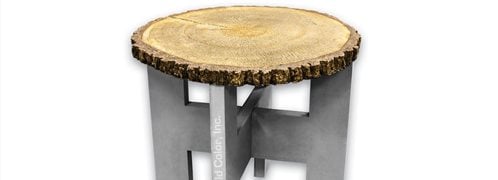 Urethane Furniture Molds
Log tables, benches and more
Urethane Furniture Molds
Log tables, benches and more
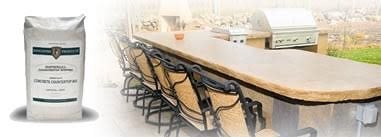 Imperial Mix
Lightweight, strong, minimal shrinkage
Imperial Mix
Lightweight, strong, minimal shrinkage
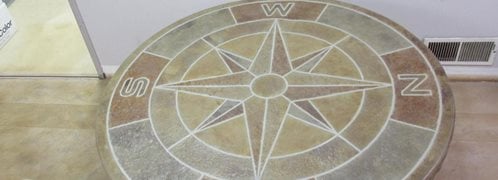 Table Top Molds
Live edge, compass, flags, checkboard, etc.
Table Top Molds
Live edge, compass, flags, checkboard, etc.
